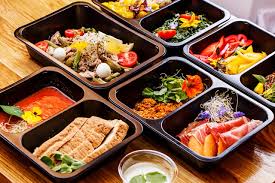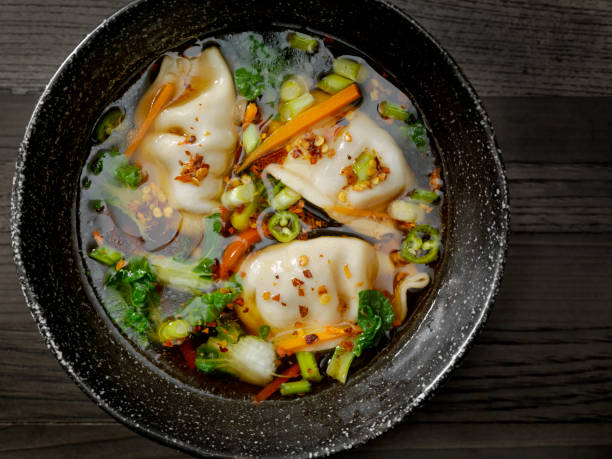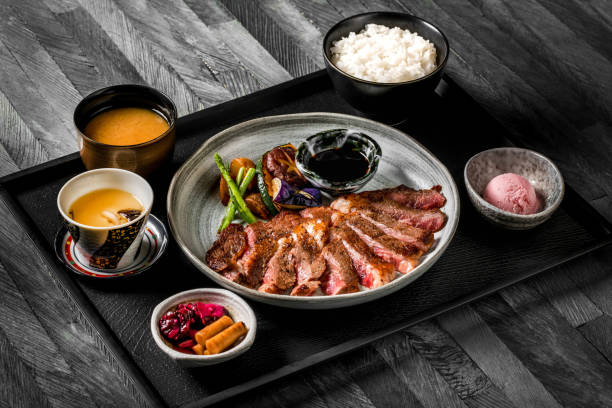Step by step guide to Australia starting a home-based food business in 2022. Scroll down and follow these links. You can also bring home fruit and vegetables that you want to preserve, can, freeze, or make jam, salsa, or pickles. This page has easy, reliable, illustrated instructions. You can also click the dropdown to access other resources. These lids are great for canning lids and ship in just 2 days.
Step by step, Australia starts a home-based food business.
Australia Cottage Food Laws, Regulations, and Facts
Even though it is illegal to sell food made in your home kitchen in Australia, it is possible. You must meet the same food safety requirements for home-based food businesses as any other food business regardless of how large or frequent you sell food.
Definitions:
- A home-based food business is where you use your home or someone else’s house to prepare food for sale. This includes catering to events, B&Bs and farm-stays, and online food sales.
- A “Food business” refers to any activity or business that involves handling any food or selling food in Australia.
Regulations
Australia has both national (federal) and provincial (state), as well as local (Council) regulations. Five food safety standards are in place:
3.1.1 Application and interpretation
3.2.1 Food safety programs
3.2.2 Food safety and general requirements
3.2.3 Food premises or equipment
3.3.1 Food safety programs to provide food service to the most vulnerable people
Home-based businesses must adhere to relevant sections of the Federal Food Standards Code.
- Standard 3.2.2 Food Safety Practices and General Requirements
- Standard 3.2.3 Food Premises & Equipment
- Part 11.2 – Labelling, Other Information Requirements
Food safety officers are available to inspect homes and businesses to ensure these requirements are being met.
The good news is that charities, community groups, and businesses operating at private homes or temporary events are exempted from certain requirements under the food safety standard. For more information, these groups and businesses should contact their local enforcer. This information can be accessed in steps 3 through 4.
How to start a home-based food company
Australia, this process isn’t officially defined, so we have gathered it from all the available government sources and our practical experience. Please let us know if you find anything else!
Step 1: Determine whether your food product can be sold.
Two myths about
- I can create my recipe and package it safely.
- I can make any food that I see in the stores at home.
Both are false. Food companies often conduct numerous lab tests and trials to determine the product’s properties, such as bacterial counts, pH, and water content. Food companies conduct many lab tests to ensure that every recipe, packaging, and process produces a shelf-safe product that is safe to eat for months to come. This type of testing is not possible at home. It is important to stick to tested recipes, equipment, and procedures. Universities and government labs have tested all recipes.
Equipment used by commercial food companies can often withstand pressures and temperatures that are not possible with home equipment. They also have packaging equipment that ensures the product is stable. Producing safe food products requires:
- This recipe has been tested in the lab.
- The right processing equipment (water bath, pressure, etc.)
- Follow the steps in a safe and clean environment
Bottled pumpkin butter and most bottled egg/milk products are two examples of foods that can be safely packaged and made at home. To ensure that potentially hazardous food, such as those that require specific temperatures, pH or water contents to be safe to consume, additional controls and procedures must be implemented.
Step 2: Verify that your kitchen meets the design criteria.
You should design and equip your premises to safely handle food and prevent contamination.
You should have:
- A layout that allows people to work in a safe environment without the risk of food contamination (e.g., To keep cooked and raw foods separated and to dispose of food waste.
- Hand washbasins with soap, soap, and single-use towels. You will need to get written approval from your Council before you can wash dishes or use a laundry sink.
- Fridges large enough and strong enough to keep food colder than 5oC (and freeze food hard)
- Enough storage space to store food and packaging
- Floors, walls, and benches that are easy to clean
- A supply of water that is safe for drinking and good light and ventilation
- A system that safely stores and disposes of waste.
Check with your local Council for advice and guidance to ensure you are properly set up.
Step 3: Check the rules of your territory or state
Each territory and state has its requirements and guidelines. You should ensure you check the ones that apply to your region.
- NSW Food Authority Home-based Food Businesses – All domestic kitchens that prepare food for sale directly to the consumer will be regulated by local councils starting 1 July 2018. Domestic kitchens that sell food only to restaurants or other businesses like cafes and supermarkets will be regulated by the NSW Food Authority.
- Victoria Health Department Starting a food business.
- Queensland Health Department Food Safety
- ACT Health Starting a Food Business within the ACT
- SA Health Starting A Food Business
- WA Department Of Health Considering starting a food business?
- NT Department Of Health: Food Safety
- Tasmania Department of Health Food Safety for Businesses and Community Organisations
Step 4: Apply to your local Council for a Business License.
After you have dealt with the design, regulatory and food issues that may make it difficult or impossible to start a home-based business, you will need to apply for a business license. This is done at your local Council. Your Council should approve you if you don’t sell high-risk food items. Before you can change your business’s name, address, or food activities, you must notify your local Council.
Step 5: Training: Food safety knowledge, skills, and certification
Although it’s not difficult, you must cook food in compliance with the law to make it sellable.
- Everyone in your company who works with food should know how to prepare, store safely, and package food.
- You or someone working in your company will probably need formal training, e.g., A certified food safety supervisor. For more information on whether your company requires a Food Safety Supervisor, check with your local Council.
Top tips for food safety in home-based businesses
Prevent contamination
- Food should be protected at all times during storage and transport.
- Before handling food, thoroughly wash your hands and dry them. Use warm running water with soap to scrub your wrists, palms and backs. Dry hands using single-use towels.
- do not handle food if you are ill
- Keep raw foods separate from ready-to-eat food – e.g., Use different cutting boards and store raw foods below ready-to-eat food.
- Protect food from pets, children, and visitors, sick persons, waste, chemicals and pests
Sanitizing and cleaning
- Keep the place free from food waste, grease, and rubbish.
- Keep food contact surfaces such as benches, utensils, and containers clean.
- Clean before you sanitize
- Use bleach, a commercial food-safe sanitizer or a dishwasher with the longest heat cycle to clean.
Food traceability
- Keep track of all your suppliers and ingredients and any businesses you have sold to.
- If you are a food manufacturer or wholesale supplier, prepare a written recall plan. Follow it if there is a need.
Food safety & food processing
- Potentially hazardous foods, such as those containing meat, eggs, and dairy, must be kept at 5oC or lower or hot at 60oC (or higher) during transport, storage, display, and receipt.
- To reduce time in the fridge, prepare food quickly (e.g., Sandwiches.
- Cook food at safe temperatures (e.g., 75oC for chicken and minced meat
- Cool cooked food quickly and store it in the refrigerator (e.g., Divide the food into smaller portions and store in the fridge.
- A food thermometer can be used to check the temperature.
- Know the safety limits (e.g., Know the critical safety limits (e.g., acidity and water activity) of any processes you use
How to create a food label
Australia, New Zealand Food Standards Code, sets out the requirements for food labeling.
FSANZ, the national food standards body, provides information to assist consumers in reading a food label. It also explains the requirements for food labeling. You can find information on many topics.
- Use by and Best Before Dates
- allergens
- Food additives include an alphabetical as well as a numerical list.
- fish labeling
- GM food labeling
- Nutrition, Health and Related Claims
- Ingredients List and Percent Labelling
- Labeling for religious or animal welfare reasons
- Nutrition Information Panels
- Truth in Labelling, Weights, Measures and Legibility
- Warning and Advisory Statements
- sugar labeling
- Proposal for warning labels regarding pregnancy in alcoholic beverages
How to create a food label
Label buster was designed to assist businesses in determining their labeling needs.
Other components may be required for food labels, such as:
- Nutrition Panel Builder – A free tool for creating a nutrition panel
- Country origin food labeling
- Australian trade measurements laws
General Recommendations
You should follow these guidelines in addition to the legal requirements.
Test pH
A pH meter that is calibrated for the date you use is best. This pH meter is reliable and affordable. This pH meter works well, but it’s not always.
Short-range pH test strips for paper, also known as litmus paper, may be substituted if the product has a pH below 4.0 and the range of paper pH is lower than 4.6.
It is recommended to keep records.
Keep a detailed written record of each batch of products sold, including:
- The recipe, including the procedures and ingredients
- Canned and sold
- Canning date
- Dates and locations for sale
- Gross sales receipts
- Any pH test results
Sanitation
While inspections are not necessary, it is worth considering the following:
- Clean and sanitized equipment before use
- Before and after using bleach water, clean work surfaces.
- Separate ingredients from unprocessed foods
- Do not allow pets to enter the work area.
- Keep floors and walls clean.
- Make sure you have enough lighting.
- To keep bugs out, make sure your window and door screens are in good condition.
- While working, wash your hands often
- If you have a private well, it is worth testing the water every year.
Best Practices
- Allergens: Most state home baking laws require an “ingredient list” and “allergen listing” on the label for sold items. However, if your state doesn’t have one, you should. These are the eight most common food allergens.
- milk,
- eggs,
- fish,
- The crustacean shellfish
- Tree nuts
- peanuts,
- Wheat
- Soybean.
- Cross-allergenicity There is ingredients, including flours, which can also cause cross-allergenicity. Cross-allergenicity is an allergic reaction in which proteins in one substance and proteins in another are similar. This is explained by the American Academy of Allergy Asthma & Immunology. For example, lupine flour can trigger an allergic reaction when eaten with peanuts. Cricket flour could trigger an allergic reaction when consumed with shellfish. This information could be a useful marketing tool to help consumers stay safe.
- The 2 Hour/4-Hour Rule If you are selling refrigerated bakery products, it is important to remember the “2 hour/4 hour Rule.” This system can be used to ensure that potentially dangerous foods are not out of control (temperatures higher than 45 degrees Fahrenheit) when they are being prepared, served, or displayed for sale. These are the guidelines:
- A potentially dangerous food that has been left out of temperature control for less than 2 hours may be allowed to continue being used or returned to the fridge.
- It is best to dispose of potentially dangerous food that has been left out of temperature control for longer than 2 hours and less than 4 hours.
- It is best to throw out potentially dangerous food that has been left outside temperature control for over 4 hours.




